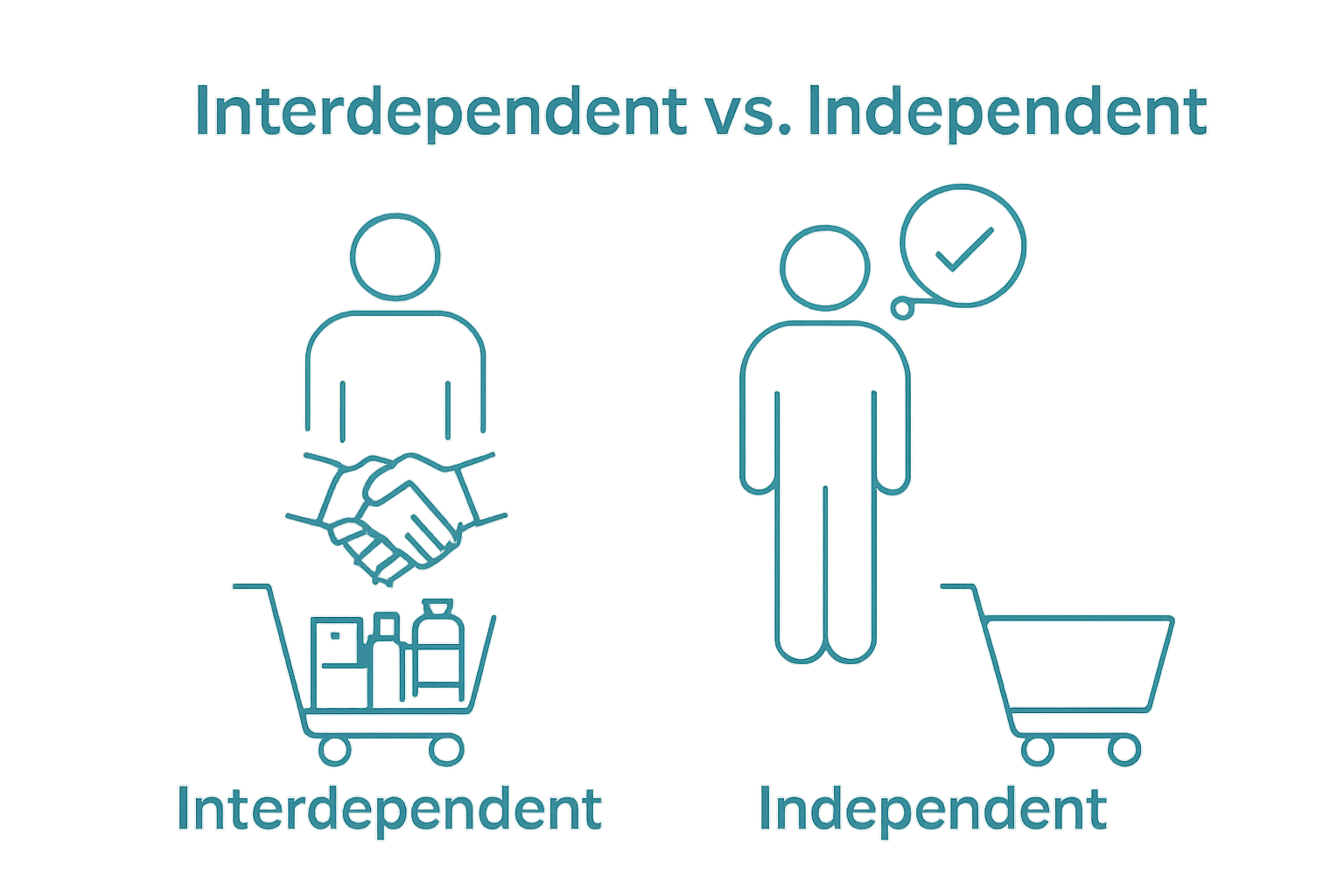-
Shop
- Advanced Technologies
- Arts, Crafts & Hobbies
- Back to School
- Bathroom
- Best-Sellers
- Car Accessories
- Clothing
- Dating & Social Skills
- Digital Resources
- Budgeting & Saving
- Emotional Intelligence
- Entrepreneurship & Business Growth
- Financial Independence
- Financial Mindset & Psychology
- Goal Setting
- Leadership
- Mindfulness
- Motivation
- Nutrition & Healthy Eating
- Positive Thinking
- Productivity
- Self Confidence
- Sleep Improvement
- Stress Management & Relaxation
- Yoga & Mind-Body Practices
- Education & Learning
- Family & Parenting
- Fashion
- Alexander McQueen
- Bags
- Bags & Wallets
- Balenciaga
- Belts
- Blazers
- Bottega Veneta
- Brunello Cucinelli
- Burberry
- Chanel
- Chloé
- Dior
- Dolce & Gabbana
- Dresses
- Etro
- Fendi
- Gucci
- Hats & Hair Accessories
- Hoodies & Sweatshirts
- Jacquemus
- Jewelry
- Jil Sander
- Jimmy Choo
- Keychains
- Kiton
- Luggage
- Men's Fashion
- Miu Miu
- Off-White
- Outerwear
- Prada
- Rick Owens
- Saint Laurent
- Shoes
- Skirts
- Socks & Tights
- Sunglasses
- Sweaters & Cardigans
- The Row
- Tom Ford
- Tops & Shirts
- Valentino
- Valentino Garavani
- Versace
- Vivienne Westwood
- Watches
- Fashion Accessories
- Furniture
- Gadgets
- Health & Beauty
- Health & Wellness
- Home & Garden
- Home Supplies
- Kids & Babies
- Kitchen
- Lighting
- Nike
- Patio, Lawn & Garden
- Personal Growth
- Personal Style & Fashion
- Pet Care
- Pet Supplies
- Pets
- Sport & Outdoors
- Super Deals
- TikTok Growth & Monetization Mastery
- Travel
- Wealth
- Wealth Building
- YouTube Shorts Best-Sellers
What is Cross-Selling? Understanding Its Impact and Benefits

Cross-selling sounds simple. Recommend a few extras while a customer checks out and watch profits rise. But the real surprise is that strategic cross-selling can lift profit margins by as much as 30 percent according to Management Science. Most people still think cross-selling is all about squeezing more from every sale. The best brands actually use it to make shopping easier and even help customers discover products they would have missed.
Table of Contents
- Defining Cross-Selling: Key Concepts And Examples
- The Importance Of Cross-Selling In Online Shopping
- How Cross-Selling Benefits Both Customers And Retailers
- Understanding The Psychology Behind Cross-Selling
- Real-World Examples Of Effective Cross-Selling Strategies
Quick Summary
| Takeaway | Explanation |
|---|---|
| Cross-selling enhances customer experience. | It involves recommending complementary products that genuinely benefit the buyer, enhancing their purchase’s value. |
| Effective cross-selling relies on customer insights. | Understanding customer preferences and needs allows for more relevant and useful product recommendations. |
| Online retailers utilize advanced algorithms. | E-commerce platforms analyze customer data to suggest complementary items, improving personalization and engagement. |
| Genuine value over aggressive tactics. | Successful cross-selling prioritizes solving customer problems rather than merely pushing additional products for sales. |
| Cross-selling benefits both customers and retailers. | This strategy creates meaningful relationships, increasing customer satisfaction and driving revenue growth for businesses. |
Defining Cross-Selling: Key Concepts and Examples
Cross-selling represents a strategic sales approach where businesses recommend additional products or services to existing customers, enhancing both customer experience and revenue potential. At its core, cross-selling aims to increase transaction value by suggesting complementary items that provide genuine utility to the buyer.
Understanding the Core Concept
In practical terms, cross-selling involves proposing related or supplementary products that naturally extend the value of a customer’s initial purchase. According to research from Oregon University, this practice is fundamentally about creating meaningful connections between products that genuinely benefit the customer.
Key characteristics of effective cross-selling include:
- Relevance to the customer’s original purchase
- Demonstrable additional value or utility
- Solving an adjacent problem or need
- Enhancing the overall customer experience
Real-World Cross-Selling Examples
Consider these practical scenarios that illustrate cross-selling strategies:
- A smartphone purchase might include a recommended phone case, screen protector, or wireless charger
- Purchasing a laptop could prompt suggestions for antivirus software, extended warranty, or productivity applications
- Buying running shoes might involve cross-selling related items like athletic socks, performance tracking devices, or fitness accessories
Successful cross-selling requires understanding customer needs, preferences, and creating genuine value rather than simply pushing additional products. The most effective cross-selling strategies focus on solving customer problems and enhancing their original purchase experience.
Businesses that master cross-selling techniques can significantly improve customer satisfaction and increase average transaction values by presenting thoughtful, contextually relevant product recommendations.
The Importance of Cross-Selling in Online Shopping
Cross-selling has become a transformative strategy in online shopping, enabling businesses to create more personalized, value-driven customer experiences while simultaneously expanding revenue opportunities. The digital marketplace demands sophisticated approaches that go beyond traditional transactional interactions.
Economic and Customer Experience Benefits
Online retailers leverage cross-selling as a powerful mechanism to enhance customer engagement and generate additional revenue streams. Research from Management Science reveals that strategic cross-selling can significantly improve profit margins by obtaining detailed customer information and creating more intimate purchasing experiences.
Key economic advantages of cross-selling include:
- Increased average transaction value
- Enhanced customer lifetime value
- Improved customer retention rates
- More efficient marketing spend
- Greater understanding of customer preferences
Strategic Implementation in Digital Commerce
Successful cross-selling in online shopping requires sophisticated algorithms and deep understanding of customer behavior. Modern eCommerce platforms utilize advanced recommendation engines that analyze purchasing history, browsing patterns, and contextual product relationships to suggest complementary items.
These recommendation systems consider multiple factors such as:
- Previous purchase history
- Product compatibility
- Customer browsing behavior
- Seasonal trends
- Demographic information
By integrating intelligent cross-selling techniques, online retailers can transform standard transactions into personalized shopping experiences. Learn more about related sales strategies in our guide on upselling techniques.
Ultimately, effective cross-selling is not about aggressive product pushing but creating genuine value for customers by anticipating their needs and offering relevant, helpful recommendations that enhance their original purchase.
How Cross-Selling Benefits Both Customers and Retailers
Cross-selling emerges as a win-win strategy that simultaneously addresses the needs of consumers and businesses, creating mutually beneficial transactional experiences. By understanding the nuanced advantages for both parties, retailers can design more strategic and customer-centric approaches to product recommendations.
Customer Advantages of Cross-Selling
For customers, cross-selling offers several compelling benefits that enhance their shopping experience. Research from Arizona State University suggests that well-designed cross-selling strategies can provide significant value to consumers beyond their initial purchase.
Key customer benefits include:

- Discovering complementary products that solve additional problems
- Receiving personalized recommendations tailored to their preferences
- Potential cost savings through bundled or related product offerings
- Simplified shopping experience with contextually relevant suggestions
- Access to products they might not have independently discovered
Retailer Strategic Advantages
Retailers gain substantial strategic advantages through intelligent cross-selling approaches. By understanding customer needs and preferences, businesses can create more targeted marketing strategies that drive revenue and customer loyalty.
Significant retailer benefits encompass:
- Increased average transaction value
- Improved customer retention rates
- Enhanced understanding of customer purchasing behaviors
- More efficient marketing resource allocation
- Opportunities for building deeper customer relationships
By integrating cross-selling techniques thoughtfully, businesses transform traditional transactions into sophisticated, value-driven interactions. Our guide on upselling techniques provides additional insights into advanced sales strategies.
The most successful cross-selling strategies prioritize genuine customer value over aggressive sales tactics, recognizing that sustainable business growth emerges from creating meaningful, personalized shopping experiences that benefit both consumers and retailers.
Understanding the Psychology Behind Cross-Selling
Cross-selling is more than a transactional strategy. It represents a sophisticated psychological approach to understanding consumer behavior, motivation, and decision-making processes. By delving into the cognitive mechanisms that influence purchasing decisions, businesses can create more effective and empathetic sales strategies.
Cognitive Triggers in Consumer Decision Making
Research from Baylor University reveals that consumers’ psychological frameworks significantly impact their receptiveness to cross-selling attempts. These frameworks are deeply rooted in individual self-construal, which determines how people perceive themselves in relation to others and make purchasing decisions.
Key psychological factors influencing cross-selling effectiveness include:
- Personal perception of product utility
- Emotional connection to the purchasing experience
- Perceived value and problem-solving potential
- Trust in the recommendation source
- Individual decision-making style
Self-Construal and Purchasing Behavior
Consumers fundamentally differ in their approach to purchasing based on two primary self-construal types: interdependent and independent. Understanding these psychological profiles enables businesses to tailor cross-selling strategies more precisely.
To better understand the two primary types of consumer self-construal mentioned in the article, the following table compares their key psychological characteristics and receptiveness to cross-selling recommendations.
| Self-Construal Type | Key Psychological Characteristics | Receptiveness to Cross-Selling Recommendations |
|---|---|---|
| Interdependent | Values harmony, considers social context | More likely to be receptive and open to suggestions |
| Independent | Prioritizes autonomy, values individual choice | Less influenced by external recommendations |
Psychological characteristics of self-construal types:

- Interdependent Self-Construal: More likely to value harmony, receptive to recommendations
- Independent Self-Construal: Prioritizes individual choice, less influenced by external suggestions
- Moderating factors include product complementarity and perceived personal benefit
Our guide on upselling techniques provides additional insights into advanced psychological sales strategies.
Successful cross-selling transcends traditional sales tactics by recognizing that every purchasing decision is fundamentally a complex psychological interaction between consumer needs, emotional triggers, and perceived value propositions.
Real-World Examples of Effective Cross-Selling Strategies
Cross-selling strategies vary widely across industries, demonstrating the versatility and potential of this sophisticated sales approach. By examining successful implementations, businesses can gain valuable insights into creating compelling, customer-centric cross-selling experiences that drive revenue and enhance customer satisfaction.
Technology and E-Commerce Cross-Selling
Research from Harvard Business Review highlights how innovative companies leverage data-driven cross-selling techniques to provide personalized recommendations. Technology platforms like Amazon have revolutionized cross-selling by utilizing advanced algorithms that analyze customer browsing history, previous purchases, and contextual product relationships.
Effective cross-selling strategies in technology sectors include:
- Recommending complementary accessories with primary product purchases
- Suggesting software upgrades or extended warranty options
- Bundling related digital services with hardware purchases
- Creating personalized product recommendation interfaces
- Implementing intelligent recommendation engines
Financial Services Cross-Selling Approaches
Financial institutions have long recognized the potential of cross-selling to enhance customer relationships and generate additional revenue streams. Banks and insurance companies develop intricate cross-selling strategies that leverage customer data to offer relevant financial products.
Key cross-selling techniques in financial services encompass:
- Offering credit cards to existing bank account holders
- Suggesting investment products based on savings patterns
- Providing insurance packages aligned with customer profiles
- Recommending retirement planning services
- Creating bundled financial service packages
Our guide on upselling techniques provides deeper insights into advanced sales methodologies.
Successful cross-selling transcends mere product pushing, instead focusing on understanding customer needs, anticipating potential requirements, and presenting genuinely valuable recommendations that solve real problems and enhance overall customer experience.
See Real Cross-Selling in Action—Transform Your Shopping Experience at mrs.mattie.com
You just learned how smart cross-selling strategies can solve problems, reveal hidden value, and make shopping easier by recommending products that actually improve your purchase. On mrs.mattie.com, we bring these ideas to life daily with relevant suggestions—like pairing your favorite shoes with top-rated socks or showing you belt deals right when you need them.

Ready to experience the benefits yourself? Visit mrs.mattie.com to see personalized deals and discover curated recommendations made to boost your satisfaction. Take advantage of our new arrivals, secure payments, and fast worldwide shipping. Start shopping now to unlock more value from every purchase.
Frequently Asked Questions
What is cross-selling?
Cross-selling is a sales strategy where businesses recommend additional products or services to customers based on their initial purchase, aiming to enhance customer experience and increase transaction value.
How does cross-selling benefit customers?
Cross-selling benefits customers by offering personalized product recommendations, helping them discover complementary items that solve additional problems, and creating a simplified shopping experience.
What are effective examples of cross-selling?
Effective examples of cross-selling include suggesting accessories for a smartphone, recommending software with a laptop purchase, or offering related athletic gear alongside running shoes.
How can retailers implement cross-selling strategies effectively?
Retailers can implement effective cross-selling strategies by utilizing customer data, leveraging advanced recommendation algorithms, analyzing purchasing behavior, and ensuring that product suggestions are genuinely relevant and valuable.
Recommended
Was this article helpful?
Yes
No
Comments
September 22, 2025
[…] approach allows retailers to understand cross-selling opportunities by analyzing customer purchase patterns and recommending complementary products across different […]
September 24, 2025
[…] What is Cross-Selling? Understanding Its Impact and Benefits […]









Leave a reply to What is Omnichannel Retail? Understanding Its Importance